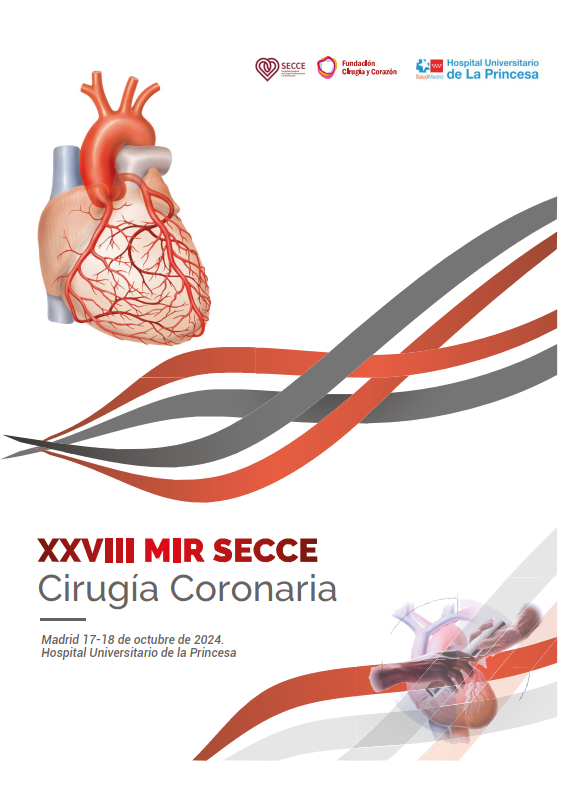Degenerative mitral regurgitation is arguably the valvular disease in which surgery has achieved the most consistent and durable results in modern cardiology. Mitral valve repair, particularly in experienced centers, offers operative mortality below 2%, long-term survival comparable to the general population, and durability frequently exceeding 15 years.
Nevertheless, the growing development of transcatheter techniques has led to the expansion of devices such as Abbott MitraClip® beyond their initial indication for functional mitral regurgitation, now reaching patients with degenerative disease. The recent study published in The Journal of Thoracic and Cardiovascular Surgery addresses this comparison in a particularly delicate group—octogenarians with severe organic mitral regurgitation—where operative risk may raise doubts about the optimal treatment strategy.
The investigation, conducted at the Mayo Clinic between 2014 and 2024, included 466 octogenarian patients with severe degenerative mitral regurgitation treated with either surgical mitral repair (n=252) or transcatheter edge-to-edge repair using Abbott MitraClip® (n=214), after propensity score matching. The primary goal was to compare clinical and functional outcomes between both approaches in an elderly but still active population with meaningful life expectancy.
Thirty-day mortality was similar between groups (0.8% with MitraClip® vs 1.6% with surgery; p=.56), indicating lower initial invasiveness for the percutaneous approach, though without statistical significance. Hospital stay and major complications were also lower with MitraClip®. However, differences emerged in terms of efficacy and durability. At 12–36 months, residual mitral regurgitation ≥ moderate was far more frequent after MitraClip® (38–54% at 1–3 years) compared with only 9% after surgery (p<.001; HR=6.4). At 5 years, mitral reintervention was required in 16.9% of the MitraClip® group versus 3.4% after surgery (p=.011), and heart failure readmission reached 37% versus 17%, respectively (p<.001). Overall 5-year survival was significantly higher with surgery (68% vs 56%; HR=1.74; p=.019).
The authors concluded that, although Abbott MitraClip® represents a safe and less invasive alternative, surgery continues to offer superior efficacy and durability even in selected octogenarians. They recommend cautious patient selection, prioritizing surgical repair whenever operative risk is acceptable.
COMMENTARY:
Comparing Abbott MitraClip® with surgical repair for degenerative mitral regurgitation is, in many respects, a clinically unbalanced exercise. Surgical mitral repair remains one of the most successful procedures in contemporary cardiac surgery—operative mortality below 2%, complete anatomical restoration, durability exceeding 15 years, and survival rates approaching those of the general population.
In contrast, Abbott MitraClip® provides a partial and temporary solution originally designed for inoperable or high-risk patients with functional mitral regurgitation, not as a substitute for durable anatomical repair. The analyzed study confirms what clinical logic anticipated: while early results with MitraClip® are acceptable, its ability to eliminate regurgitation and maintain long-term correction is markedly inferior. Residual regurgitation in one-third of patients and a nearly fivefold higher reintervention rate are not minor findings—they clearly indicate that comparison with surgery is unjustified.
Functional improvement is also less consistent, and echocardiographic benefits (reverse remodeling, volume reduction) are sustained only after surgery. Neither COAPT, EXPAND, nor contemporary registries of TEER in degenerative disease have shown a survival benefit over surgery. Follow-up rarely exceeds five years, and studied populations systematically exclude patients with repairable anatomy or acceptable operative risk.
Moreover, reinterventions after MitraClip® are associated with significantly higher mortality than reoperations after prior surgical repair—a particularly relevant fact in older patients with preserved ventricular function and reasonable life expectancy. It is worth noting that, given the patients’ age, reoperation rates may even be underestimated, further diminishing the device’s relative performance. Recurrence of significant mitral regurgitation appears to be a more reliable indicator of true therapeutic efficacy than nominal procedural success.
Despite these limitations, the 2025 ESC/EACTS Guidelines assign devices such as Abbott MitraClip® a Class IIarecommendation even in intermediate surgical risk patients—based on limited follow-up and without direct comparison to surgery in reference centers. This update is concerning, since the definition of “intermediate risk” remains vague and may be misapplied to many octogenarians who, despite their age, are truly low surgical risk. As risk assessment scales vary by procedure, confusion may arise: for example, what is considered high risk (>4%) for coronary bypass corresponds roughly to low risk for aortic valve replacement. For mitral surgery, thresholds can only be inferred and are not well established.
Multiple studies have consistently shown that, even in this age group, surgical mitral repair performed in experienced centers yields mortality rates below 2–3%, durable functional results, and survival comparable to age-matched controls. Equating age with risk is therefore a conceptual error that may deprive otherwise operable patients of definitive anatomical repair—substituting it with a palliative, less durable alternative.
In practice, this trend shifts surgery toward younger or anatomically complex cases, when the true goal should be to preserve proven long-term outcomes where surgery is already highly effective. MitraClip® has a valuable role for frail or inoperable patients, but it should not be portrayed as an equivalent option. Surgery remains the only treatment capable of restoring mitral valve anatomy, physiology, and durability.
Rather than a competition between techniques, what is needed is clinical coherence. MitraClip® has its place, but surgical repair remains—and will continue to be—the gold standard against which all other treatments must be measured. True progress lies not in lowering the bar to claim equivalence, but in maintaining the surgical excellence already achieved and reserving transcatheter therapies for those who genuinely require them.
REFERENCE:
Danesh S, Schaff HV, Holst KA, Tang PC, Sawma T, Dearani JA, et al. Transcatheter edge-to-edge repair versus mitral valve surgery in octogenarians: Comparative analysis of safety, durability, and survival. J Thorac Cardiovasc Surg. 2025 Aug 21:S0022-5223(25)00670-1. doi: 10.1016/j.jtcvs.2025.08.016.



